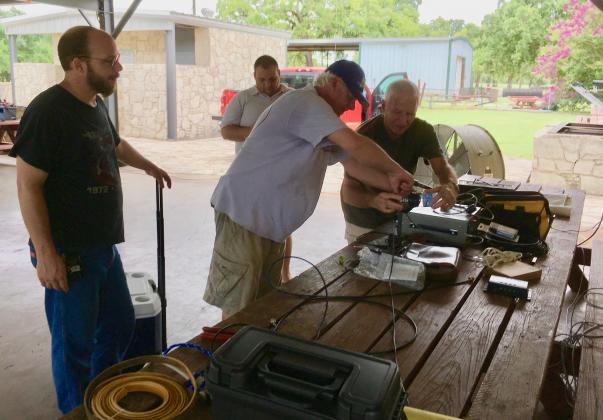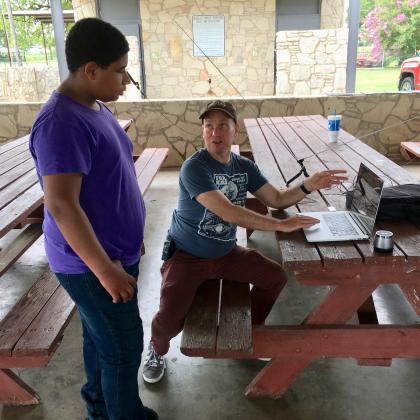Field Day for Grimes County Amateur Radio Group
How would you use a tape measure, water bottle, trash can, fence post, fishing weight, tree and wire to help you communicate? They were used by the Grimes County Amateur Radio Group, GCARG, KG5PLK, as they participated in Field Day at August Horst Recreation Park, in Navasota Saturday, June 22.
Field day is held the first full weekend in June by amateur radio operators, hams, in the U.S. and Canada. It is an opportunity for hams to hone emergency communication skills and stresses emergency preparedness skills that may be needed if electricity, cellphone towers and commercial antennas were not available. GCARG used only solar and battery power for their contacts.
A metal tape measure can be used as an antenna as demonstrated by Steve Austin, W5SGA, GCARG president Larry Smith, W5LAS and Mason Heath. An empty water bottle wrapped with wire can be used as a resistor which will keep electricity from feeding back through the antenna cable and feeding into the radio which could damage it. GCARG members clipped an antenna to a trash can letting the radial wires fan out along the ground. A fence post provides antenna support for another antenna. A fishing weight was attached to a wire and thrown over a tree branch. This acted as an antenna.
Austin and Mason attached solar panels which can be rolled up to a battery which could be used to power various types of equipment. Austin used the browser on his laptop computer to see what other groups were participating in Field Day and could be contacted. On his handheld radio Dominick Adamo, KG5JRA, made several contacts with local hams in the Brazos Valley. Smith brought his Kenwood TS-830S radio. Made in the 1970s, it uses vacuum tubes which were replaced by transistors which over time have been replaced by various digital devices.
James Cravey, KG5ZTZ, used software defined radio (SDR), one of several digital modes. SDR allows communication from a radio to a computer. With his battery powered laptop, software and a usb drive attached to an antenna it was possible to hear communications of people who have radios. Eighth-grader Jackson Heath was interested in SDR saying he is learning to code in school.
Other Field Day participants were Les Watson, KE5VPY, GCARG vice president Charles Jones W5CWJ, Sara Adamo, Linda Napier, Ben Napier, KH-5PHV, Deborah Richardson, N5SCI and several members of the public who dropped by. More information about GCARG and ham radio in general can be found at gcarg.org.


